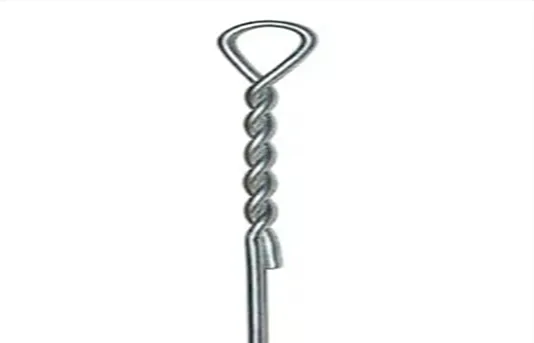-
 Phone:
Phone: -
 Email:
Email:

Effective Solutions for Rockfall Prevention with Advanced Netting Systems
Rockfall Protection Netting An Essential Solution for Landslide Prevention
Rockfall protection netting is an increasingly vital component in the realm of geotechnical engineering, particularly as urban development expands into mountainous and hilly terrains. As more infrastructure projects emerge in these vulnerable areas, the risk of rockfalls—where loose rocks or boulders detach from cliffs and slopes—becomes a significant hazard. This article explores the importance, functioning, and benefits of rockfall protection netting in safeguarding communities and infrastructure.
The Need for Rockfall Protection
Landslides and rockfalls can pose serious threats to lives, property, and the environment. Such occurrences can result from various factors, including weather conditions, geological processes, and human activities. Heavy rainfall, earthquakes, and even construction activities can destabilize slopes and trigger rockfalls. This risk is heightened in mountainous regions where steep terrains and loose materials are common.
The consequences of rockfalls can be devastating. In addition to injury and loss of life, they can cause extensive damage to roads, railways, and buildings, leading to costly repairs and significant economic losses. Hence, implementing effective rockfall protection systems is crucial for reducing this hazard.
Understanding Rockfall Protection Netting
Rockfall protection netting is a specialized system designed to intercept and stabilize falling rocks before they reach the ground. Typically made of high-strength steel wire or synthetic materials, these nets are engineered to absorb the energy of falling rocks and prevent them from cascading further down slopes. The installation of rockfall nets can vary depending on the specific site conditions and the potential risk level, ranging from simple drapery systems to more complex, anchored structures.
rockfall protection netting

The nets are usually installed at strategic locations, such as slopes and cliffs, where the geological and environmental assessments indicate the likelihood of rockfall events. They work in combination with other protective measures, such as retaining walls and drainage systems, to enhance overall safety.
Effectiveness and Benefits
The primary benefit of rockfall protection netting is its ability to prevent rockfalls from causing catastrophic damage. With appropriate design and installation, these nets can significantly mitigate risks, making roads and infrastructures safer for both pedestrians and vehicles. Furthermore, the use of netting systems can reduce the frequency and severity of emergency response incidents, lowering costs associated with recovery efforts.
Another advantage of rockfall protection netting is its environmental friendliness. Unlike more invasive erosive control measures, netting systems can be installed with minimal disruption to the surrounding ecosystem. They maintain natural vegetation and soil stability, promoting the continued growth of plants that play a crucial role in holding the soil together.
Moreover, rockfall netting systems are versatile. They can be adapted to suit various terrains and rock types, making them a viable option for many different geological contexts. Their modular design allows for easy installation and maintenance, further enhancing their appeal for long-term use.
Conclusion
In conclusion, rockfall protection netting serves as an essential tool in land management and civil engineering efforts aimed at reducing the risks associated with landslides and rockfalls. As urban development continues to expand into risk-prone areas, the need for effective protection systems becomes ever more critical. By investing in rockfall protection netting, we can safeguard lives, protect property, and minimize ecological disruption, ensuring a safer and more sustainable interaction with our natural environment. This proactive approach is fundamental not just for the present but also for the future stability of communities located near vulnerable terrains.
-
Wire Mesh for Every Need: A Practical SolutionNewsJul.25,2025
-
Steel Fences: Durable, Secure, and Stylish OptionsNewsJul.25,2025
-
Roll Top Fencing: A Smart Solution for Safety and SecurityNewsJul.25,2025
-
Cattle Farm Fencing Solutions for Maximum SecurityNewsJul.25,2025
-
Affordable Iron Binding Wire SolutionsNewsJul.25,2025
-
Affordable Galvanized Wire SolutionsNewsJul.25,2025
-
Wire Hanger Recycling IdeasNewsJul.25,2025








